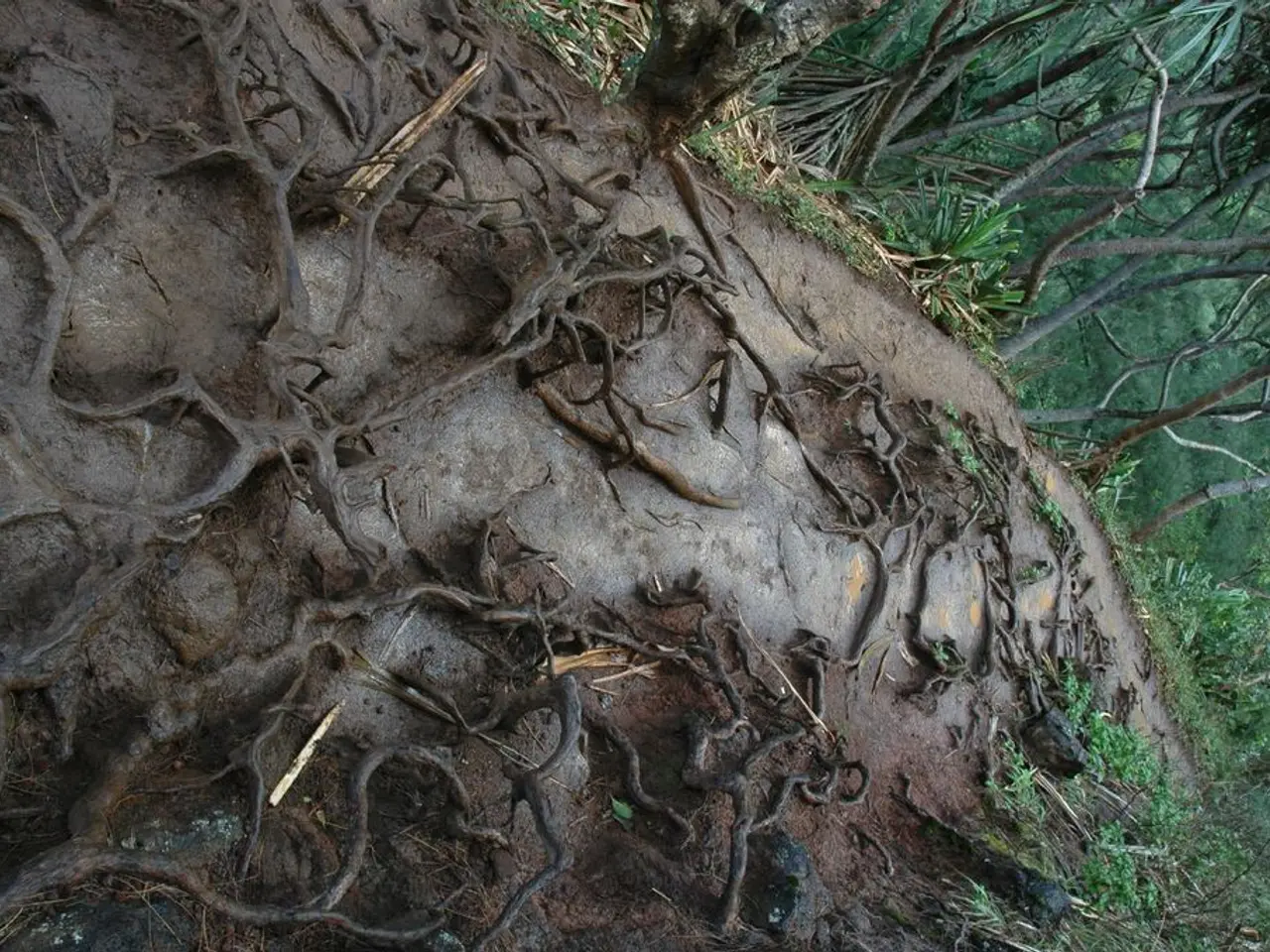Root Fusion in Bonsai: Strengthening and Boosting Root Structures
In the intricate world of bonsai cultivation, root grafting stands as a testament to precision, patience, and dedication. This ancient art form transforms the humble root system into a lifeline, breathing new life into withered specimens and elevating the art of bonsai to unprecedented heights.
Root grafting involves the fusion of root systems, a technique that enables practitioners to create more extensive root structures, promoting increased vigor and stability. This advanced procedure is particularly useful for bonsai trees suffering from severely damaged roots, although careful assessment of the tree's overall health is crucial before attempting this delicate procedure.
Expert root fusion is an advanced technique that overcomes complex root-related challenges and creates intricate, harmonious connections between disparate root systems. This technique enhances the structural integrity and overall liveliness of bonsai trees, making them more resilient to the challenges posed by reduced growth, tree instability, and potential tree loss.
When integrating a new rootstock, the bonsai's aesthetic design may be temporarily altered. However, skilled grafting techniques can minimize visual impact, allowing the tree to adapt and ultimately thrive with a revitalized root system.
Advanced root grafting techniques, such as grafting multiple rootstocks, are becoming increasingly popular among bonsai artists. These techniques not only improve root systems but also adapt species to specific climates or soil conditions.
The process of root grafting typically involves carefully matching vascular cambium layers of rootstock and scion roots and securely binding them with graft tape or wax to prevent infection and moisture loss. This ensures a successful union and growth.
Timing and preparation are crucial factors in root grafting. Conducting root grafts during late winter or early spring, when the tree is dormant or beginning active growth, promotes better callus formation and graft integration.
For bonsai, root grafts can strengthen the root base to better support dramatic trunk styles or improve nutrient uptake in smaller containers. Some bonsai artists use root grafting in combination with other propagation methods such as layer grafting or air layering to encourage new root growth while maintaining strong structural connections.
Grafting success depends on species compatibility. Many bonsai practitioners choose closely related species or varieties to maximize graft success. While it's technically possible to use a rootstock from a different species, compatibility issues often arise, leading to poor graft union or rejection. It's generally recommended to use a rootstock from the same or closely related species for ideal results.
Post-grafting care includes careful watering, humidity control, and protection from pests or diseases. Gradual acclimation is critical to avoid graft failure.
For hands-on learning and observation, workshops and detailed guides offered at specialized bonsai schools provide valuable practical experience with unusual species and complex techniques.
Repairing a bonsai's compromised root system is crucial for its long-term survival and continued development. Determining the extent of the damage and developing a tailored plan for recovery is essential. This may involve gentle pruning, careful repotting, or root grafting to reconnect severed roots.
In conclusion, root grafting is a powerful tool in the bonsai artist's arsenal, offering a chance to breathe new life into withered trees and push the boundaries of what is possible in this ancient art form. By understanding the key strategies and techniques involved, bonsai enthusiasts can achieve optimal root development and tree aesthetics, ensuring their bonsai trees thrive for generations to come.
Home-and-garden, gardening enthusiasts might find the intricate world of bonsai appealing, as root grafting techniques can be applied to various species to adapt them to specific climates or soil conditions, enhancing the structural integrity and overall liveliness of these miniature trees. A skilled bonsai artist can use advanced root grafting techniques, such as grafting multiple rootstocks, to minimize visual impact, promote increased vigor and stability, and create harmonious connections between disparate root systems.




